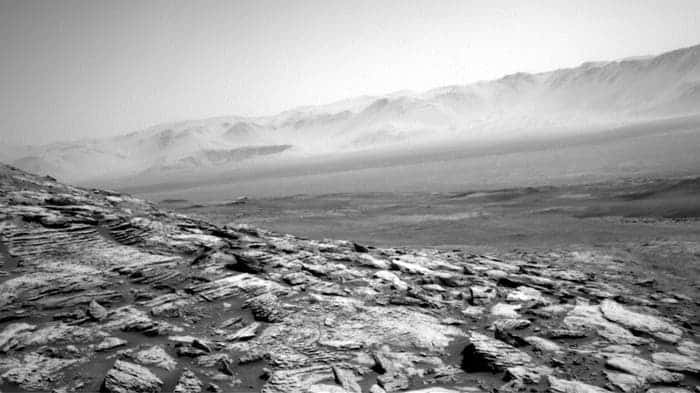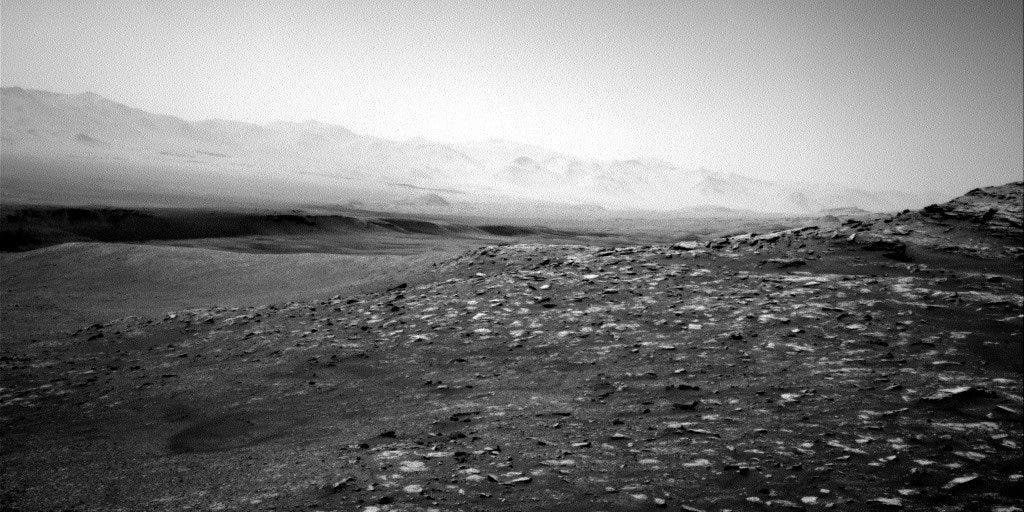Since the Opportunity rover died after a 15-year-long mission, Curiosity is the only remaining operational rover still exploring the Martian surface. Hopefully, Curiosity will outlive Opportunity in order to enrich our lives with new insights from Mars, such as this breathtaking photo that the rover captured on November 3.

The image was taken by Curiosity from atop the rim of the 100-mile-wide Gale Crater, the 3.5-billion-year-old giant crater that the rover has been exploring since 2012. The steep rocky outcrop from where Curiosity snapped the picture is called Central Butte. From this vantage point, you can see a haunting emptiness that just gives me the chills.
Curiosity is exploring the butte in order to analyze sedimentary rock layers, which geologists plan to analyze back on Earth in order to better understand the planet’s past.
The primary mission of the rover is to search for signs of life — and Gale Crater was purposefully chosen to meet this objective. NASA believes that more than 3 billion years ago, the crater was home to huge lakes and rivers filled with liquid water. It’s one of the best places on Mars to go searching for signs of life, in the past or present.

In the future, Curiosity is set to visit the other side of Central Butte, from where another collection of amazing views will be beamed back to Earth.
Hopefully, Curiosity won’t be alone for too long. NASA plans on landing the Mars 2020 rover on the red planet sometime in 2021. That same year, both China and a Russian/European initiative are also expected to land rovers.






